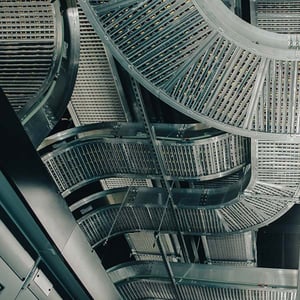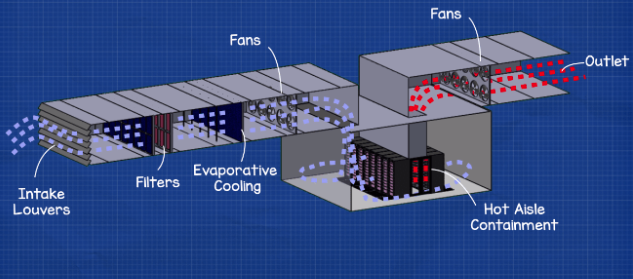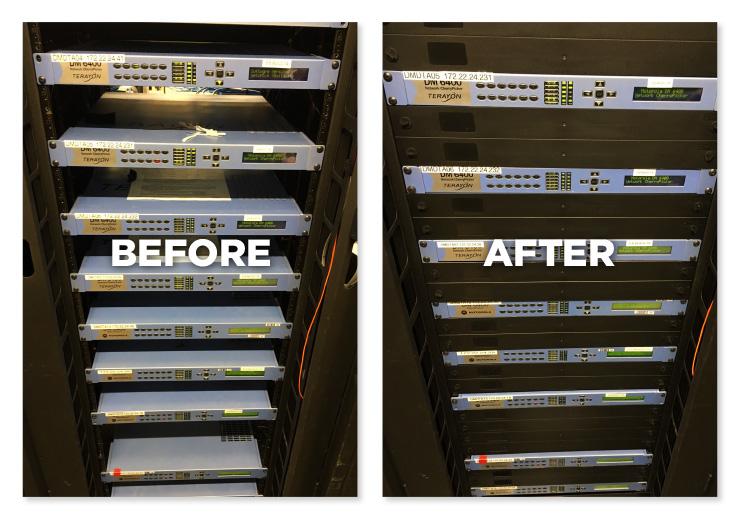
We’re a Fan of a Different Approach to Data Center Environmental Control
“Joseph Liccardo! Are you really running the air conditioner with the windows and front door wide open? You think I’m paying to cool the neighborhood?”
Am I the only one who ever got that scolding while growing up?
Looking back, it’s now apropos, considering that I’m responsible for, among other things, helping make sure that data center environmental systems are working properly and efficiently. Here I am all these years later, my parents’ words running through my head when I visit data centers and find cooling equipment working overtime to compensate for airflow management issues.
Get Your Data Center Airflow Management Right Before You Crank Up the AC
We all know that maintaining proper environmental conditions is critical. In a previous blog, I discussed the advantages of keeping temperatures and humidity within American Society of Heating, Refrigerating and Air-Conditioning Engineers (ASHRAE) recommended ranges to ensure optimal performance of client deployments as well as overall data center environmental systems and equipment.
Simply ratcheting up computer room air conditioning systems by decreasing temperature and increasing cubic foot per minute (CFM) of airflow is not the best way for data center operators to achieve ASHRAE-specified operating conditions. Running CRACs and CRAHs full tilt in the absence of airflow management best practices is very energy inefficient and less than optimal for protecting clients’ IT equipment.
Data center fans play an equally important role in maintaining the most consistent, equipment-friendly and energy efficient data center environment.
Ideally, what you want in your data center deployment is a consistent environment that helps ensure peak equipment performance. Additionally, you want to reduce the strain on data center environmental systems, to reduce overall energy use.
CoreSite takes an analytic, engineered approach to airflow management – optimizing the speed of data center fans to maintain proper CFM to deliver the precise amount of cold air into cages and cabinets. Simultaneously, a well-maintained pressure gradient via return plenums removes hot air generated by IT equipment, much like an attic fan in a house. Less strain is put on mechanical systems and, should there be an unexpected temperature spike or in the unlikely event that a CRAC/CRAH fails, redundant units can increase fan speed to compensate.
Also, when airflow is routed correctly and we can reduce fan speed, the passage of hot air across heat exchangers is slowed. Extending the time of contact makes the heat exchange more effective.
The result is peak IT performance, reduced energy consumption and increased reliability of equipment and data center environmental systems.
Free Cooling: Further Increasing Efficiency and Reliability While Reducing Energy Usage
In addition to facilitating proper airflow within IT spaces, various types of fans and fan installations enable data centers to take advantage of airside and waterside free cooling, which also reduces strain on mechanical systems as well as energy usage.
With airside free cooling, large air handlers employing fans and filters draw in and circulate cooler outside air, while return fans pull hot air out of the data center. When outside conditions are appropriate, a facility can leverage waterside free cooling by utilizing a free cooling heat exchanger to transfer heat between chilled water and condenser water, bypassing the mechanical refrigeration cycle that occurs within a chiller. This allows the heat from the data center to be rejected to the atmosphere with much less energy use.

It’s important to stress that free cooling is location dependent. In some geographies, it may be possible to employ this technique year-round. In others, only at certain times of the year. And in some locations where it’s quite hot all year long, free cooling might not be viable.
Still, even in challenging climates, a free cooling unit can use up to 60% less energy than mechanical cooling would in the same environment.1
Keep Hot and Cold Air Separated
At one level, data center airflow management is simple: keep hot and cold air separated. As straightforward as this concept is, it’s often difficult to orchestrate and enforce, creating problems for both data center clients and operators. This is routinely the case because not enough attention is paid to airflow management from the get-go.
Achieving optimal airflow requires a collaborative partnership between data center clients and data center operators. Without both parties acting in concert, ideal airflow channels will be challenging if not impossible to achieve and SLAs will be more difficult to meet.
Separating hot and cold air by means of a cold aisle/hot aisle computer room configuration of server racks is one common approach to achieving this objective. But in and of itself, it’s not enough. There are additional actions that data center clients should take to facilitate proper airflow:
- Install blanking panels across empty rack units to prevent hot and cold air mixing.
- Seal off the ends of cabinets and rack aisles to achieve full hot and cold air containment.
- Seal holes and other gaps through which cables, conduits, etc. pass through to further prevent hot and cold air from mixing.
- Make sure equipment is not installed backwards. After powering on equipment, check to make sure equipment cooling fans are not blowing hot air into cold aisles.
- Keep data center cages and cabinets clean and free of unnecessary boxes, tools and debris that can block air from cooling IT equipment.
- Close cabinet doors at all times to ensure the effectiveness of the other measures taken to maintain proper airflow.
- Set server equipment alarms to correct temperatures.

Effective, Efficient, Reliable Data Center Cooling Requires More Than Just CRACs & CRAHs
As you can see, there’s more to maintaining optimal environmental conditions in the data center than simply running CRACs and CRAHs 24/7 at full capacity or by adding air conditioning capacity. Optimizing data center airflow to make sure hot and cold air do not mix and reduce the strain on mechanical cooling systems keeps IT deployments running reliably, at peak efficiency and in an environmentally friendly way.
Schedule an Audit - We would welcome the opportunity to audit your deployment for air flow management. Contact us to get an audit scheduled.
We work with clients to achieve efficient airflow management throughout our data centers, rather than primarily relying on CRACs/CRAHs. To help you ensure your data center deployments are operating at peak efficiency, CoreSite has created a Customer Checklist for Optimal Data Center Operations that you can download.
The CoreSite Operations Team is available 24/7 to assist you with everything from your data center installation, ensuring your equipment is being effectively and efficiently cooled, and to answer any other questions you may have about your deployment.








